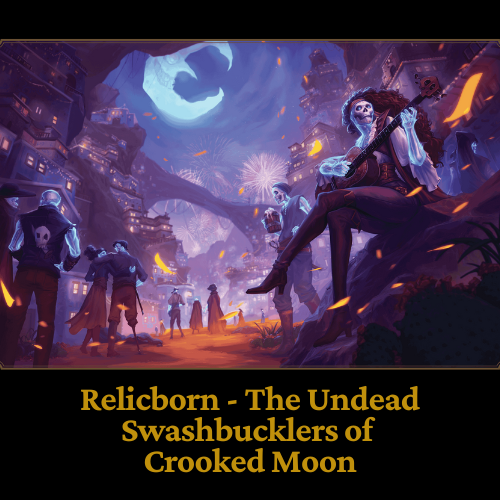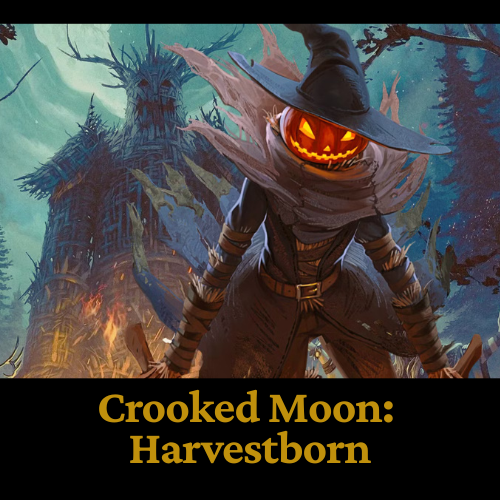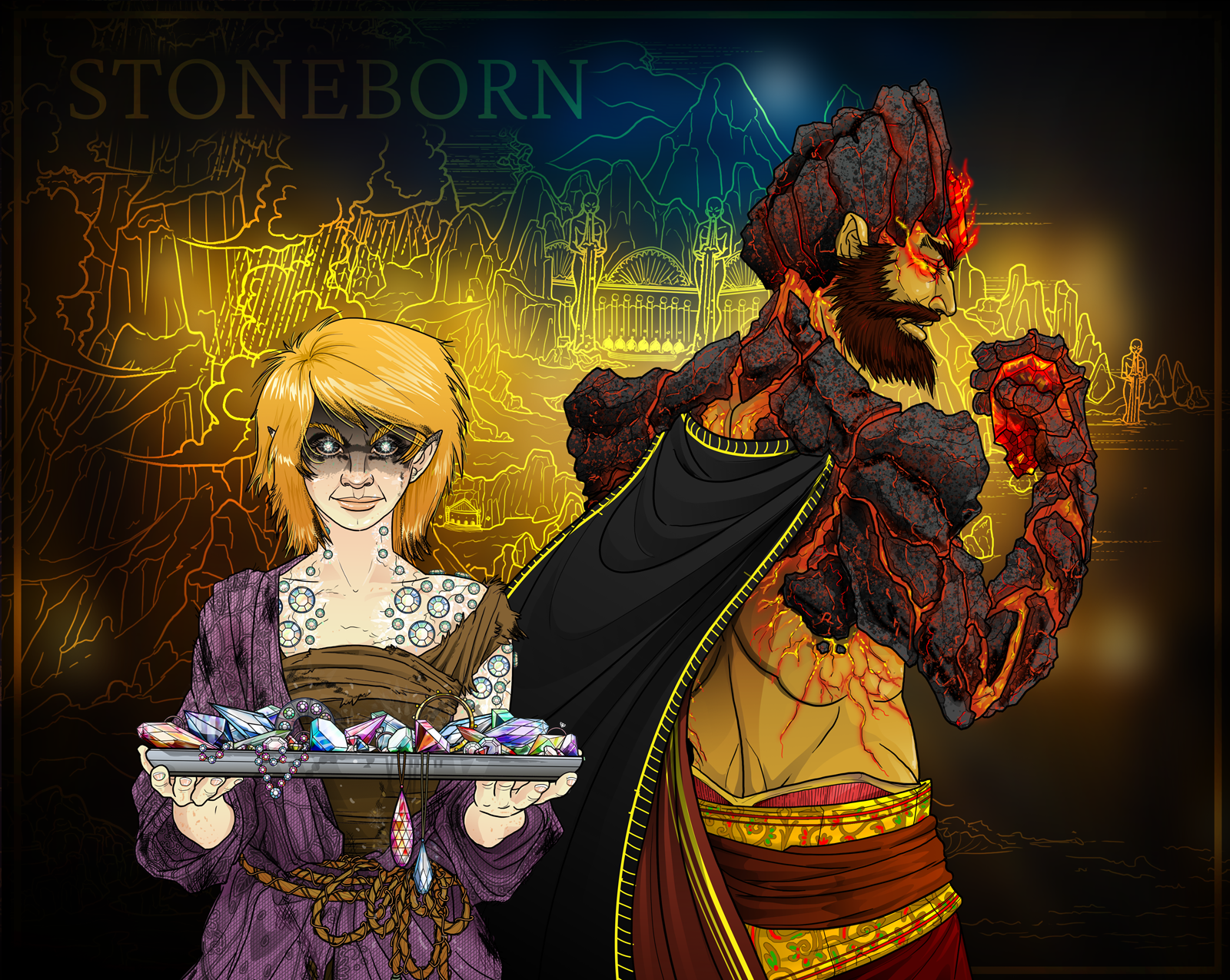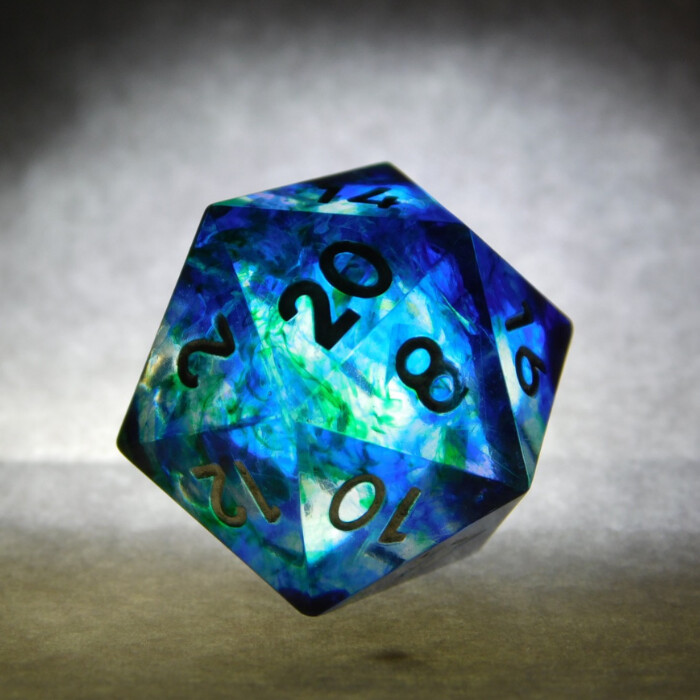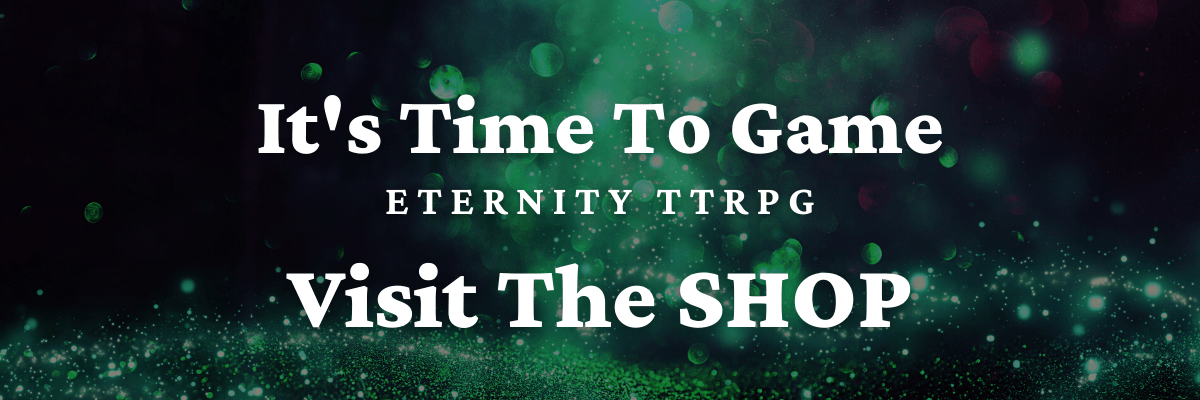Why You Need a DnD Campaign Planner
If you plan on playing an ongoing DnD campaign, you need a DnD campaign planner. They’re an essential tool for
dungeon masters - and I would suggest - even for players of a campaign.
DnD campaigns, as opposed to single-shot sessions or a mini-series of adventures, are great. Simply put, the best tabletop gaming experiences come from ongoing TTRPG campaigns. Similar to how mini-series on Netflix get better as the season goes on, DnD campaigns increase gaming drama and satisfaction the more hours are put into the game.
If you haven’t yet played in a full-fledged, year-or-longer tabletop campaign, I highly recommend the experience.
To make a DnD RPG campaign successful, you need a way to track everything that happens in your game over the course of the campaign. Which is why you need a DnD campaign planner. I can’t say enough about how much value you’ll get from a little organization to your ongoing game.
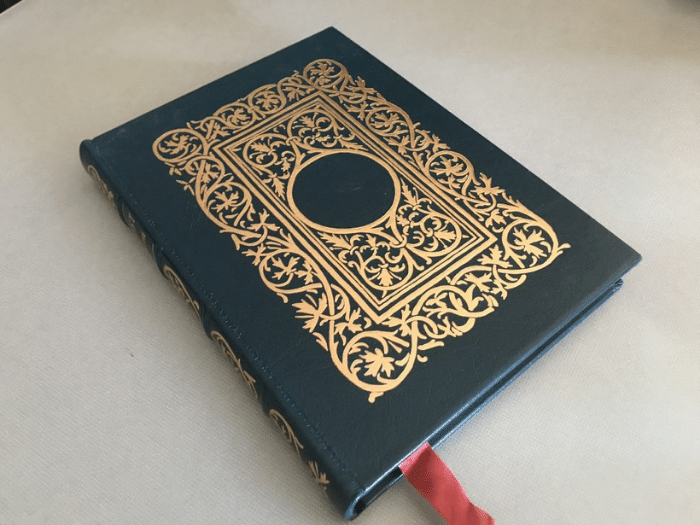
DnD Campaign Planner Options
When it comes to DnD campaign planners, you have four main choices when it comes to planner type:
- Physical – Purchasable Options
- Digital – Purchasable Options
- Physical – Free Options
- Digital – Free Options
If you’re reading this article, I’m assuming you know something about DnD campaigns and campaign planners. But just in case you aren’t yet convinced on why’d you need to get one, check out these sections to answer that question, further down in this article:
- Improve Your Story Quality
- Connect Characters to Your Story
- Make Your Gaming Experiences Epic
- Keep Your Campaign from Falling Apart
- Improve Your Next Campaign
- Level Up Your Fun
1. Physical DnD Campaign Planner Purchasable Options
I love the experience of opening up my game’s core rulebooks before a gaming session begins. The art, the weight of the books, the crisp feel of pages as they turn. The experience of having something physical for my game puts my mind in the right place for storytelling. It’s magical, plain and simple.
I know I’m not alone in that feeling because people still buy the DnD core rulebooks with every new edition that comes out. You would think with how easily accessible digital assets are for gaming nowadays, that physical versions would fall by the wayside. But that hasn’t been the case yet, and I think, probably never fully will.
Part of the magic of dungeons and dragons is the magic of physical elements used at your gaming table. And one of the most important of these elements is your DnD campaign planner.
Unfortunately, I haven’t yet seen a physical product with the same level of intentionality built into it that I feel lengthy DnD campaigns really deserve. Thus, the closest you can get to a physical DnD campaign planner is one of the following.
But I will say that these options are still really good, and infinitely better than having nothing:
DnD Worldbuilder’s Journal
The DnD Worldbuilder’s Journal has a flashy, classic-looking dungeons and dragons cover, along with hundreds of pages of journaling prompts. The quality of the journal is good. However, let me be clear that this journal is not – as I define it – a true DnD campaign planner.
The DnD Worldbuilder’s Journal is guide to help dungeon masters conceptualize their campaign world. If you’re creating your own campaign without the help of published campaigns or adventures, the journal acts as a very helpful writing exercise.
The Worldbuilder’s Journal does not have places for you to write in and systematically track major NPCs, events, places, items, or plotlines for your overarching story. It’s not really an organization tool, as much as a creative one. Still useful, just not in the same way.
I simply list the DnD Worldbuilder’s Journal in this article because I do think it’s a great way to stretch your creativity and benefit your DnD campaign. Think of it like a supplement to your DnD campaign planner.
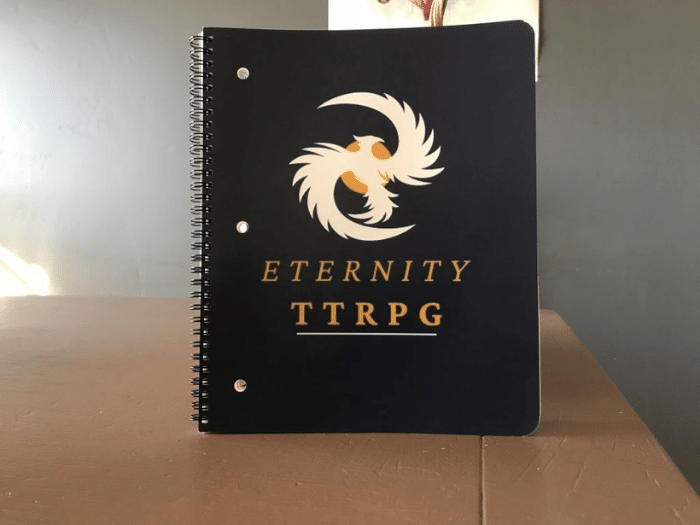
Fantasy Themed DnD Campaign Planner
When it comes down to it, your other option for a physical and purchased DnD campaign planner (that’s higher quality than a basic notebook) is a fantasy-themed notebook.
The idea is to have a notebook that creates a spark of magic for you when you game. For me, great artwork in the form of a quality journal that’s fantasy-themed actually does put me into a frame of mind for gaming. It makes the game feel more alive, silly as that may sound.
I also have and utilize a couple styles of journals.
This journal with a gryphon imprint cover has unlined paper with a more medieval feel to it. I like the leather cover, the fantasy art cover, and the clasps that lock. It’s a classy journal for keeping notes and ideas written down. The free-form space on the page (unlined) is also nice for adding artwork or drawings of your own. This is the kind of journal I use for worldbuilding or concept creation with stories and character. It also makes a great DnD campaign planner, so long as you keep track of which pages hold what information.
Then, there’s this kind of planner with a dragon cover, which is a little more practical as an all-around campaign planner. The harder cover makes writing easier. It’s got a bookmark to help quickly reference where you last left off. And the lines on the page make note keeping a bit more organized. It also has the great fantasy-themed artwork and graphics at the bottom of each page that make the journal feel like it belongs in your game’s fantasy world.
For either planner, I’d recommend getting some kind of sticky notes or reference tabs so you can keep track of specific elements in your journal.
2. Digital DnD Campaign Planner Purchasable Options
There is an ever-expanding list of options available nowadays for digital DnD campaign planners. Even though I don’t always love having computers at the gaming table as I feel they can be a distraction at times, I can’t deny their usefulness.
Very serious gamers who are great with technology have put together virtually perfect ways to track your DnD campaign, online, through a number of websites.
Note that you don’t have to have an online game of DnD in order to benefit from these digital resources. These online campaign planners complement tabletop games, as well. Either use a computer or phone during your game, or simply reference your online notes beforehand.
Basically, good digital DnD campaign planners do more for you than any notebook system you could probably ever create yourself. Like I said, I’m coming around to the idea more and more, even considering as much as I love my fantasy-themed notebooks, and the like.
Let’s take a look at some of the best options:
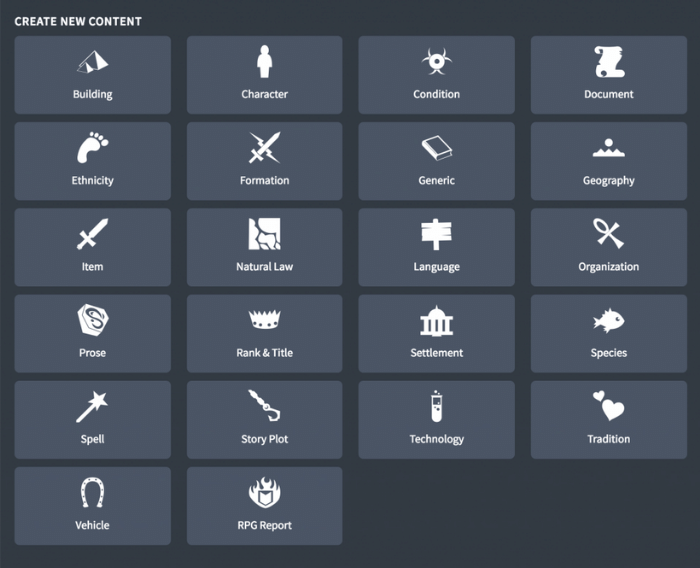
Epic World Builder
I recently came across Epic World Builder from their team reaching out to me, at the Eternity TTRPG site. Normally, I don't pay a lot of attention to incoming emails, but in their case, I was really intrigued in their product, right from the start. The team at Epic World Builder told me that what makes their online campaign planner option so unique is that it's almost like Google Maps, but for your game's world.
Epic World Builder allows you to import maps, then "pin" notes to specific locations on that map, which can then even take you to a page you can create for that location. Specific location pages can have additional notes, plus their own maps, and their own pins. You can literally go from viewing an entire continent, down to a city, to a specific building in that city, and to the dungeons contained therein, all with their very innovative campaign tools.
As a huge tabletop gamer myself, I recently signed up for their "Silver" plan which comes with most of the basic goodies, for only $5/ mo.
Epic World Builder also has name generators for fantasy races, an amazing dungeon builder, a growing library of free maps (located in their "Store"), and so much more.
World Anvil
World Anvil, in my opinion, is by far the best digital DnD campaign planner option. They have both free and paid subscription options. From my experiences so far with World Anvil, even the free version is worthwhile. Their paid prices range from $5-12/ mo, with yearly options that save the cost of 3 full months.
World Anvil is like having your own custom website specifically for your gaming group – and perhaps gaming fans (more on that, below).
First off, World Anvil claims to have built-in compatibility with hundreds of games (as of the writing of this article). DnD 5th edition, Pathfinder, Savage Worlds, Call of Cthulu, Star Wars, Cypher System, Legend of the Five Rings, Zweihander… the list goes on. This is valuable info because all resources provided by World Anvil are already set to go with whatever game you’re playing. One less step with which to concern yourself.
This campaign planner also has places to keep track of virtually every aspect of your campaign. Villains, NPCs, plotlines, religions, world history, artifacts, gods and demigods, towns, cities, organizations, and more. It’s the easiest organizational tool that I’ve ever seen for DnD.
You can share notes with players – or only certain players, if you wish. Your players can interact with one another. And you can even show off your campaign world and stories to other gamers, through World Anvil’s website.
An especially great idea that I enjoy about World Anvil is that you can monetize your campaign. If you’re passionate about world and campaign creation, the World Anvil Sage Worldsmith subscription (at the bottom of the page) gives you a place to share your skills with the gaming world, and earn money for doing so. Pretty neat setup.
Other Digital DnD Campaign Planner Options
This guide wouldn’t be complete without listing some of World Anvil’s competitors. I haven’t tried them all, and to be honest, I probably won’t. World Anvil provides everything for gaming that I need.
If, however, you’re looking for a feature that World Anvil simply doesn’t provide, or you’d like extra options to explore for yourself, you may take a look into these:
- Obsidian Portal
- Kanka
- Scabard
- DnD Campaign Planner
All of these sites have both a free and paid subscription options. They have many of the features of World Anvil, but not all. They’re solid platforms, just with less momentum, customization, and communities than World Anvil. That doesn’t mean they’re any worse.
There may even be one or two features or benefits unique to each site that I simply haven’t seen yet. If you’re interested in exploring for yourself, I encourage you to do so.

3. Free Physical DnD Campaign Planner
There’s nothing wrong with using a notebook and pencil/ pen to keep all your campaign’s notes. In fact, I literally did that, with no additional organization, for the entirety of my early gaming years, and even up until maybe 5 years ago. And even then, I only “upgraded” to using Word documents on my computer, but still with no special tracking system.
My point is, notebooks and pencils work really well for tabletop RPGs, and they always will.
There are distinct advantages to having a physical DnD campaign planner (over a digital one), if that’s your style:
- There’s something magical about having something physical for your DnD game. There’s a reason people still buy physical DnD core rulebooks. The magic of creativity written in notebooks matches the magic of fantasy gaming. I don’t 100% know why. It just does.
- I really enjoy when there aren’t computers at the gaming table as I find it helps everyone more easily get into the flow of the game’s story.
- There’s something very satisfying about the tactile experience of a piece of paper. Many times, I even print out parts of my game that I’ve already typed out, just to have the paper on-hand.
- Notebooks are easy to store and easy to find. I keep all my game’s notebooks in a series of red storage cubes, right next to my gaming table.
- If you need to make quick notes on your campaign, your character, plotlines, or anything related to your story, just grab your campaign’s notebook and write it down real quick. No need to wait for your computer to boot up.
Nowadays, I like a little mix between physical and digital in my ongoing TTRPG campaigns. But I still heavily utilize notebooks. Especially when it comes to creating mega dungeons for my players (I consider a “mega-dungeon” an 8-hour+ event, or one that runs multiple gaming sessions).
Though it’s not technically free, a notebook of graphic paper (as shown immediately below) only costs a few bucks. I put this in the “free” category because it’s so inexpensive and accessible.
If you’re new to DnD or you just need a quick and easy way to go, I do recommend grabbing yourself a couple notebooks for your campaign. Even basic organization for your game is worth the time and effort.
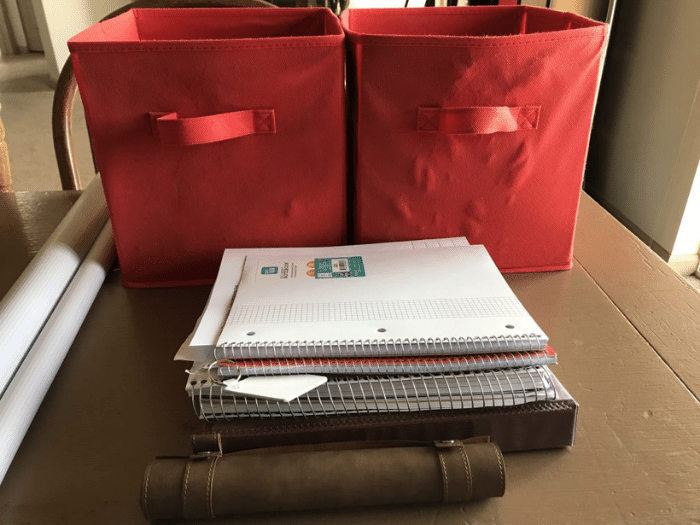
4. Free Digital DnD Campaign Planner
When it comes to digital resources for DnD, I often use Dropbox and Google Drive. Both are platforms for file sharing that work with virtually all files types. You can also work on Word documents, Excel documents, and the like, online, though these platforms – even if you don’t have a Microsoft Office subscription. They’re very handy.
If you can share extensive notes and writings, pictures, music, and you have a way to interact with your gaming group, you’re good to go. It doesn’t need to be fancy to work.
It can be good to start with a free option for keeping notes on your campaign. Especially if you’re new to longer DnD campaigns, there’s not really any need to invest in something until you get a handle on what you really need.
I will say though that after using programs like World Anvil, and seeing how other dungeon masters organized their campaigns, I did feel better creating my own system of organization. Sometimes it is worth the money to invest in a paid option so you gain an education, of sorts.
Improve Your DnD Campaign Story Quality
So, not 100% sold yet on why you need a DnD campaign planner? No worries. Read on and see if your mind changes.
Becoming a great dungeon master takes time, practice, and a lot of organization. I almost can’t stress the organization piece enough. Even if you have a great memory, can you remember all of the following things for your player’s characters without help:
- Name
- Family name
- Background
- Why they became whatever class they decided upon
- Goals
- Major beliefs
- Fears
- Other characters to which they’re connected
- And so on…
Now, think about remembering all that info (and possibly more) for every player in your group, every worthwhile NPC, and every villain. It’s simply too much. Especially for an entire DnD campaign.
But here’s the thing – if you don’t find a way to remember all of those important details, then you miss out on opportunities for the following:
- Developing plotlines
- Foreshadowing future events
- Creating dramatic and dynamic twists
- Closing up loose ends
- Creating cohesive plotlines
- Adding believability to your story
Basically, if you’re only playing 1-10 gaming sessions for perhaps a total of 30 hours of gameplay, you may not need to track all of these things, and your story may not suffer as a result.
When we’re talking about a true RPG campaign that lasts for literal years and hundreds of hours of gameplay, though, you might have dozens of characters (or more), dozens of plotlines both large and small, unsolved mysteries, and more. This may sound daunting, but it really doesn’t have to be, with good organization.
If you want a truly epic campaign that people look forward to week after week, you need a way of tracking the small details of your game. If you haven’t used a campaign planner of some kind before, you will be amazed at the difference it brings to your game.
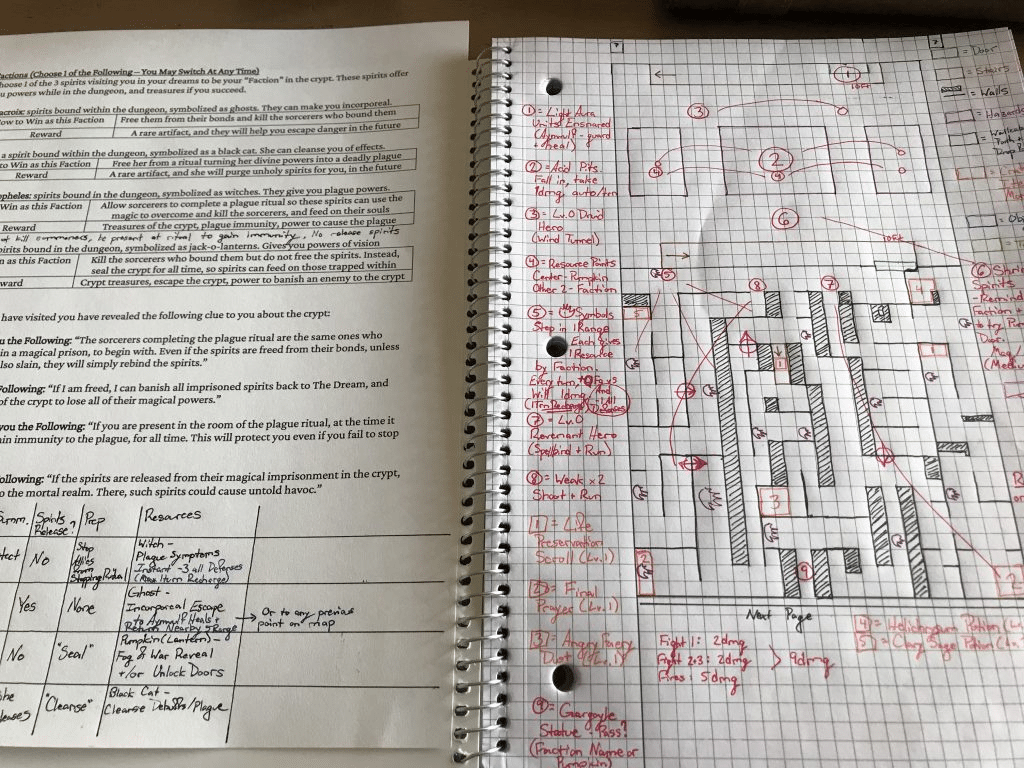
Connect Characters to Your Story
One of the main ways to connect players to your game’s ongoing story is to connect their character to the world you’re building, in every way imaginable.
There are obvious ways, of course:
- Character’s family
- Communities and organizations to which they belong
- Hometown or home nation
- Guilds or groups established by NPCs who share the same class
- Character goals
- Character fears
But what if you could attach players’ characters in smaller ways? I find that it’s often the small details of your game or story to which players really connect. Before players buy into the main storyline you’re creating, they want to find their own place in your gaming world, in their own way.
For example, I’ve found that players enjoy connecting their characters to the story in some of the following small ways:
- If they chose a race for their character that’s rare in your world, they might want to meet NPCs and see their “culture,” for help getting into the feel of their own character.
- They might create a small item or artifact in connection to their character that has some small or relatively inconsequential powers. You can tie that item to the main story in a way that works for you, which pulls them in, too.
- Similarly, I’ve seen people give their characters roleplay powers that aren’t expressly present in their class. Why make it a big deal? If I can use that power to make them feel important and give them a “place” in the party (as in, I do “this” for our group, which makes me unique), then I’m all for it.
- Some players enjoy pets. They may even want their pet to fight in combat. I usually allow such things, because again, it connects players more to the game world.
- If a player gets into a lot of detail when it comes to their character’s looks, weapons, armor, or spell effects, find ways to connect those into the story. Perhaps they describe certain symbols or runes for their character. Why not have the character find those same runes somewhere along their journey? That kind of thing makes people feel more connected to the game world.
Bottom line: you need to track the details of your campaign to make these connections for your players.
Make Your Gaming Experiences Epic
In my experience, the best tabletop RPG gaming moments come when great stories merge with in-depth character building and compelling character connection to the game world.
I’ve had tabletop RPG campaigns with friends 10 years ago that we still sometimes talk about today. Only the best kinds of moments in life get remembered and talked about 10 years later.
There is a level of tabletop gaming that’s fun. It’s good social time with friends, it’s chill, and it’s a great venue for neat experiences and some junk food.
But then there’s epic gaming experiences. Where people literally focus all their energy on the gaming table. Tensions are high in the best way. Everyone white-knuckles their dice. And every word spoken is either in a hush or is a borderline cheer or scream. These are the moments that touch deep into your being and remind you of how theater of the mind can be so much better than watching a movie, and how roleplaying a character of your own can be so much better than the best books available, anywhere.
You want epic gaming experiences. It takes effort to get there. That effort begins with a campaign planner that nails down details, from the very start.
Keep Your Campaign from Falling Apart
When I was in college, I had a regular gaming group that met almost every weekend for 2+ years, for about 4 hours of gaming each session. It was magical. It also made tracking details easier, as the game was always fresh on my mind.
Now that I have a career – and so do all my friends – it’s not so easy to game every weekend. In fact, in some cases, it can be a month or so before the entire group games together again. During those long times apart, people do forget what the actual fuck is happening in the storyline. Shocker, right?
So, when people need refreshers, you can all either stumble through 15 minutes of trying to figure out what happened last time. Or, you can pull up your campaign notes (wherever you have them), and jog everyone’s memory.
I will definitely say that if you don’t keep notes on your campaign you run the real risk of everyone forgetting the important parts of your campaign. And if that happens, chances are high that your DnD campaign will fall apart, entirely.
Or, equally bad, no one remembers what’s happening in the story, so you just sort of wing it and come up with a new story. Which of course, because your on-the-fly story makes no sense and doesn’t connect with characters or the story up to that point… then your campaign falls apart. Ask me how I know. If, however, you keep a simple log of events, it’s much easier to get everyone back on board with the main story, and keep the campaign going for the long haul.
DnD campaign planners give your game a degree of immunity to death by stagnation.

Improve Your Next Campaign
From time to time, I sit down and study my past campaigns. I don’t spend a ton of time on it. But since I keep a campaign planner for all my tabletop games, it’s very easy to sift through my notes.
I’ve had absolutely stellar campaigns. I’ve also had entire campaigns that flopped.
If you’ve never gone through your old campaign notes, you will be amazed what you learn about yourself as a person, dungeon master, and storyteller by looking through your old gaming notes.
Let the games and campaigns that didn’t fly go – just use them as a learning experience. But learn from them, and make your next campaign better than ever before. You deserve it. Your players deserve it.
Level Up Your Fun
The final reason why you need a DnD campaign planner is that – in life – what you invest in gains energy. If you want to have the most fun possible playing DnD, make sure you invest enough energy into your craft to make it fun.
I had extra time this Fall, and decided to create a new Halloween-themed mega dungeon for my gaming group. I put about 13 hours into the dungeon itself. Not to mention a couple hours of Halloween decorations, etc.
Note, that you don’t need to put that much time into your game to maximize the fun. But we are going to have a shit ton of fun. Everything I have planned out basically guarantees that.
When you put time, effort, and detail into your game, your game gets better. So, invest some time and energy into planning your game, taking notes on your game, and studying your game. It will automatically level up your dungeon master skill, and your groups level of fun.
Simple as that.
Play a TTRPG with a Built-In Campaign Planner
I understand the value of a campaign planner. That’s why in Eternity TTRPG, I built the campaign planner into the core of the game’s system. Each player has a character sheet – of course. But in addition, all players together have a “Campaign Sheet,” that acts as the “campaign’s character sheet.” On that sheet, you can keep track of major events, NPCs, places, villains, story lines, and more.
Oh, and did I mention that Eternity TTRPG is a group GM game? Obviously, I’m biased. But I think Eternity is the best game out there that you’re not yet playing. Grab a copy and enjoy! You’ll thank me for the built-in campaign planner.
Dice, Dungeons, Games & More - Eternity TTRPG
Share This Article

Author - Jacob Tegtman
Dear reader, I hope you enjoyed this article. Tabletop gaming has been a passion of mine since I was 6 years old. I've played just about every game from Dungeons and Dragons to video games like Final Fantasy. These games have inspired me, made me laugh, made me cry, and brought me endless hours of enjoyment.
I started Eternity TTRPG - and the indie tabletop game that goes along with it (Eternity Shop) - to share my love of gaming with others. I believe that in our technology-driven age, tabletop games help bring a sense of magic and community back into our world.
If you love the site, please share it with others! I have lots of gaming-related material for you to peruse and use in your own gaming sessions. If you have any questions about the site or want to contribute, just send me a message using the "Contact" page, which you can find in the site's footer.
